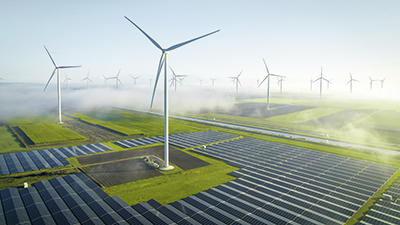
Real estate industry undergoing transformation
With digital planning expertise and a future-oriented mindset.

Highly efficient and flexible usage concepts from M&P.
Smart building is the current trend in the real estate industry. The use of advanced technologies and connected systems can lead to improvements in efficiency, safety and comfort in buildings. M&P is leading the way.
A smart building consists of a variety of technologies and systems. Sensors, monitoring systems, automation technologies or smart devices that are connected in a network form the smart infrastructure of a building.
The core of the smart building is the data analysis and use of the systems in the building as well as information from the environment (e.g. weather data). This makes it possible to optimise the operation of the building and adapt it to its use.
M&P repeatedly sets benchmarks in the field of digitised building technology. In one project, for example, our team developed a concept that links the switching on of the underfloor heating in a new office building with weather data and room booking. That building contains many individual offices, which are regulated on a room-by-room basis. Of course, our IT experts have taken into account that underfloor heating works with something of a delay. If you don’t want to stay cold for a long time in winter, you shouldn’t wait until you enter the room to turn it on. However, if the underfloor heating is linked to information from the room booking app, its start-up phase can begin before the employee even enters the office. And the advantages don’t end there: if an employee is not going to be in the office or does not book the workspace, the underfloor heating is not even turned on in the first place. If they arrive later because they have appointments elsewhere in the morning, it is switched on later, too. If this system is linked to a presence detector (booked the room, but called in sick in the morning? The detector recognises that no one is in the office at the set time and turns off the heating), the potential savings quickly become clear to every user and owner.
Smart technology can also increase comfort and safety in buildings. In a project in Brussels, when tenants pass through the Speedgate or the doors via smartphone they trigger the lift. The doors have been equipped with BLE readers and the access control system has been integrated accordingly into the smart building platform (or vice versa, depending on how you look at it).
One highly valued use case in the context of smart buildings is utilisation analysis. Whereas two or three years ago this usage was still dominated by the pandemic (keeping distances, avoiding having too many people in the office), these analyses are now also being used for potential leases in situations where regulations allow many employees to work from home.

M&P focuses its consulting and planning on the optimal integration of new smart building systems and applications into buildings and on coherent integration of building automation (at field and management level). Many of the use cases of smart buildings can be implemented through intelligent building automation. The challenge is to integrate new systems and applications and easily exchange data between those systems. It is also important to identify the right systems (keywords: openness, future viability), sensor technology (keywords: wireless or wired, the right protocol) and applications (nice-to-have or great added value) and, ideally, to have already tested them. The market for smart buildings is still developing, and the subject can be complex – and that is without even mentioning the equally important points of data protection and (cyber)security.
Our experts from building automation and smart building consulting will be happy to accompany you and your project. You benefit from the great expertise of a digital pioneer: we have advised and planned several projects over the past three years and are currently in the process of implementing and completing the first holistic smart building projects.

With digital planning expertise and a future-oriented mindset.

Saving resources and fossil fuels is a win-win situation thanks to M&P.

Question: What is the abbreviation for customer relationship management, enterprise resource planning and computer-aided facility management?